The pictures on this post are entirely of a multi-day operation we did in Kapisa. The idea was to go out, do a number of quick impact projects, improve the appearance of the area and directly infuse a little cash into the local people’s hands. So, we drove down and set up shop. Also, since the chief was there, you will see a mix of his images and mine.
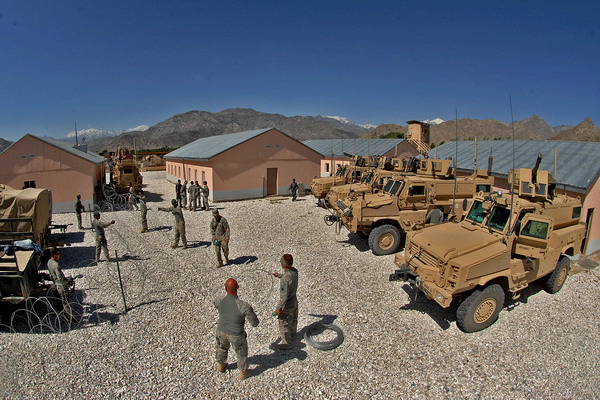
Here we are setting up camp. Chief’s wide angle does the scene more justice.
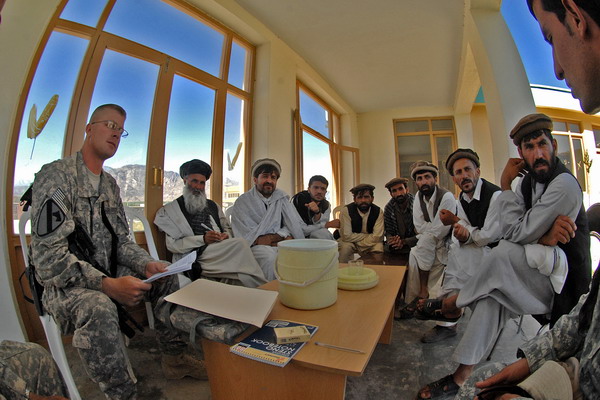
Here is Todd negotiating with the contractors for the projects. As with any transaction in Afghanistan, there was much bargaining. We try to always get the best blend of quality and price on any project. So, even a project that was a few thousand dollars, we haggled as much as with a project that is a few million.
OK, so this image may be a little crass, but it’s indicative. We had toilets that usually had water. Unfortunately, the toilets were eastern style squat ones. So, the guys fashioned this chair to westernize the experience.
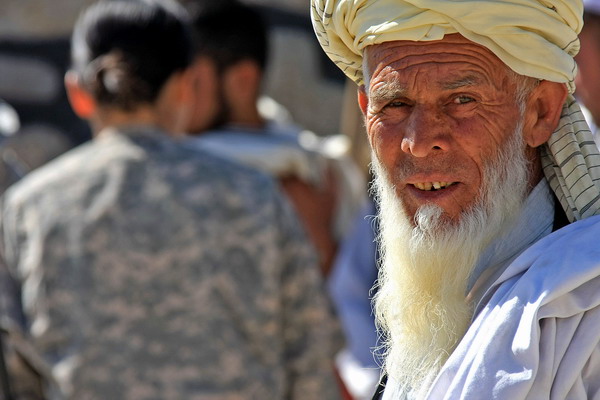
One of the laborers during the morning meeting.
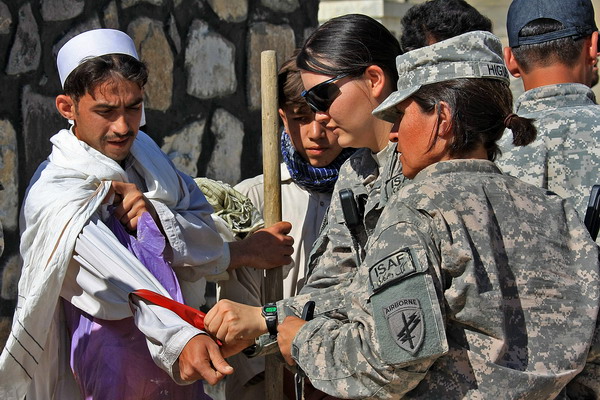
On the compound, we used colored tape to mark who was working each project. It worked pretty well, and there seemed to be quite a bit of camaraderie.
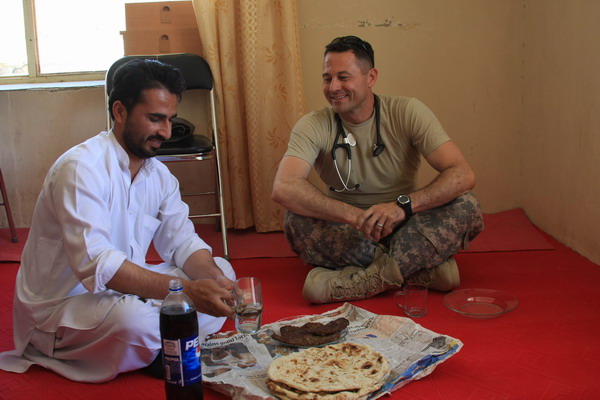
Here are the two docs (ours and Afghan). They invited me for a traditional Afghan lunch. As usual, it was delicious.
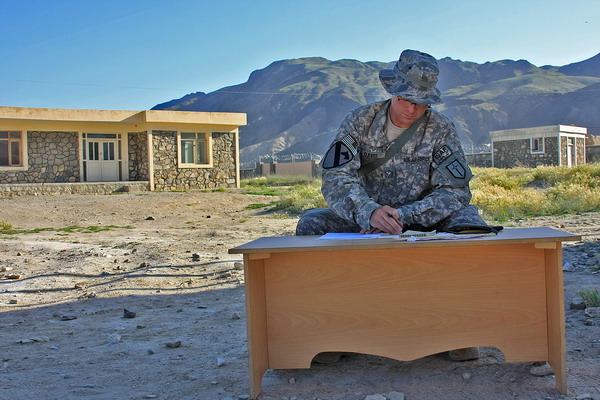
Here’s Todd, with his desk set up to pay all the workers.
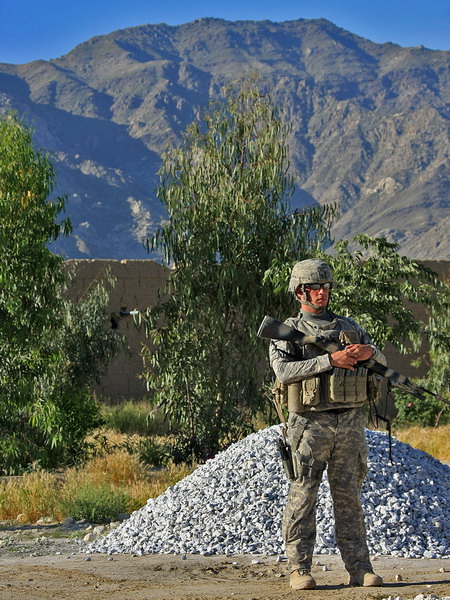
One of our infantry soldiers providing security over watch.
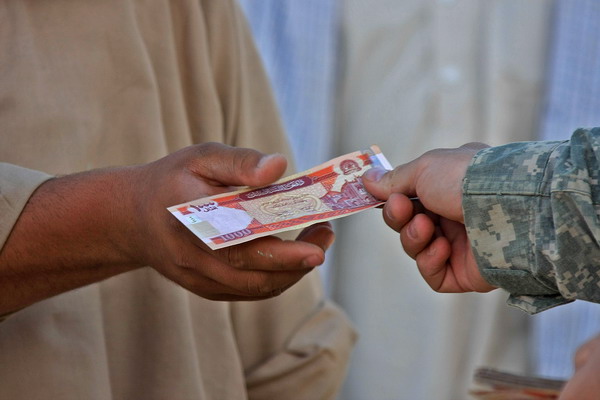
We literally put cash in people’s hands. 1000 Afghani is about $20, which is four times the going rate for an unskilled laborer. We knew this would potentially inflate the job market, but felt that getting cash to people was a good stimulus package. Similar to the one in the US, it’s long term effect remains to be seen.
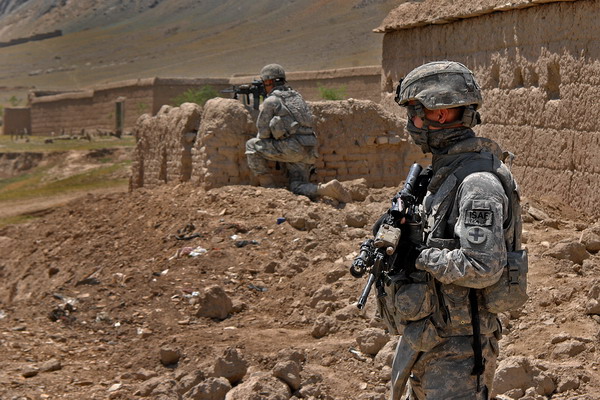
More security over watch while out looking at one of our school projects.
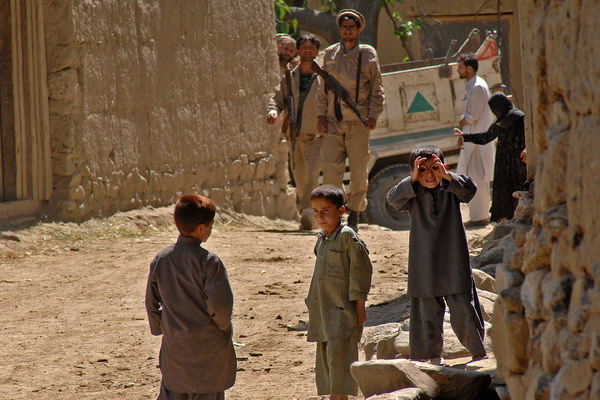
These boys were rather intrigued by us (and the Chief’s camera in particular). We were the first coalition convoy to go to this area in a couple years, so we got a lot of curious stares.
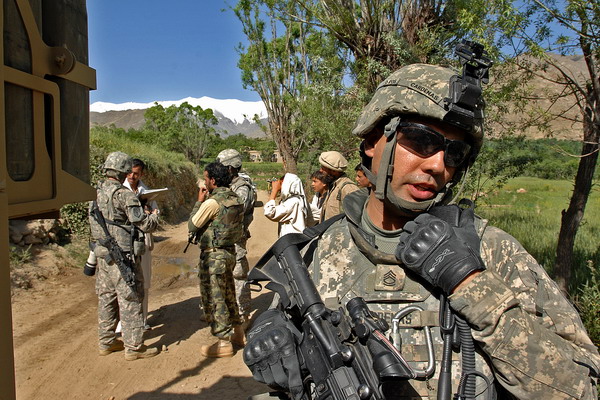
Chief caught me talking to a contractor and one of the guys communicating via the handheld radio.
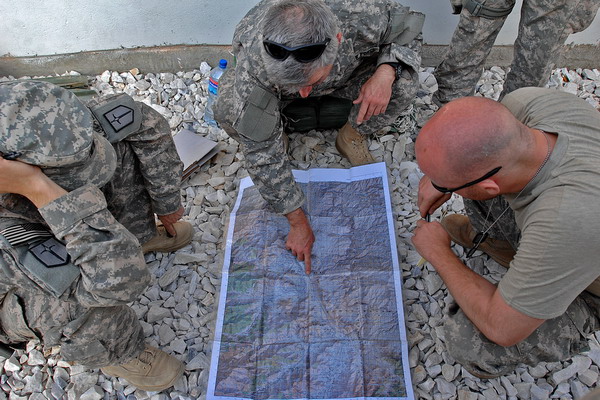
We are looking over the map doing some mission planning. The boss is in the center with the operations guy on the right and me on the left. Certainly an ad hoc setup, but much like the chair, it worked.
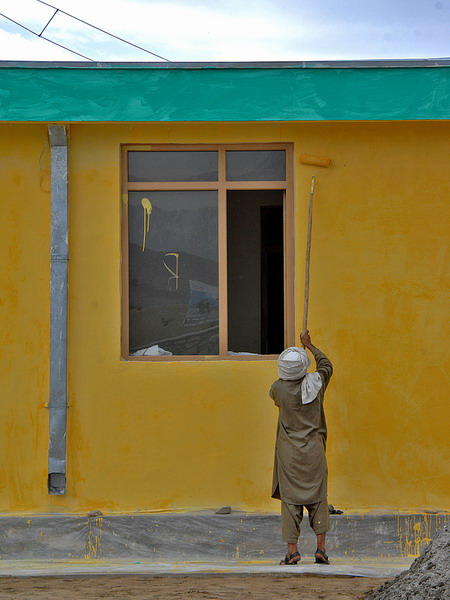
Exterior painting was one of the projects. Although I wouldn’t have chosen that color combination, the people seemed to be pleased. It definitely contrasts with the rest of the buildings in the area.
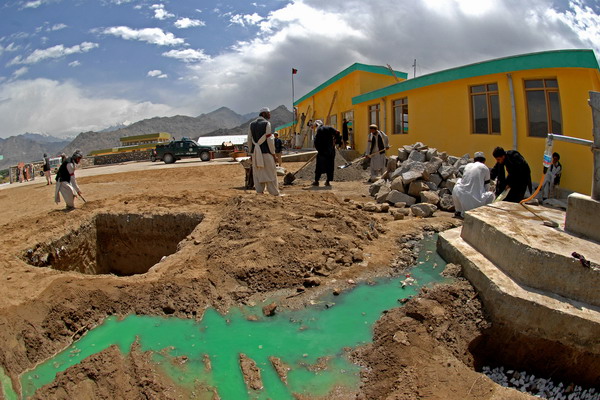
To my environmentalist friends … I know. I’m sorry.
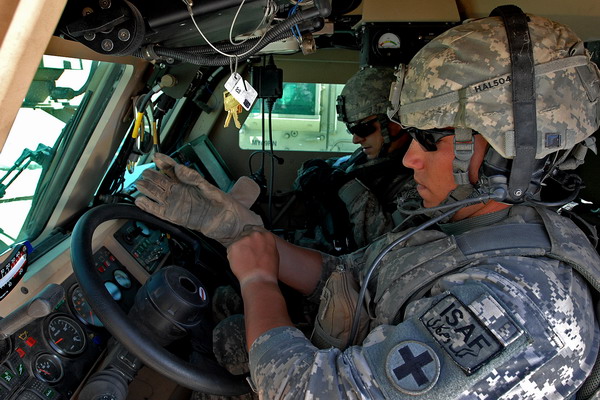
Driving our vehicles is a lot like driving a big rig. They weigh about the same too!
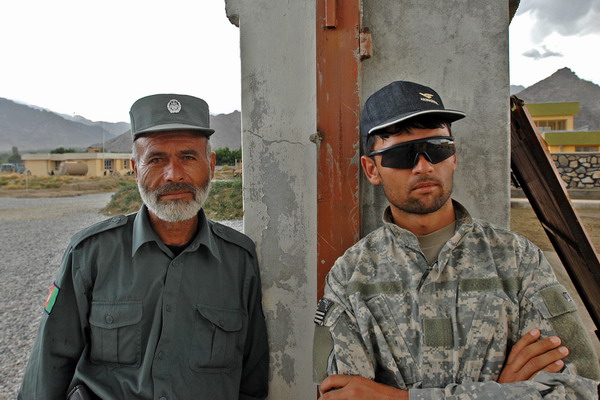
One of the Afghan National Policemen who stayed with us alongside one of our interpreters.
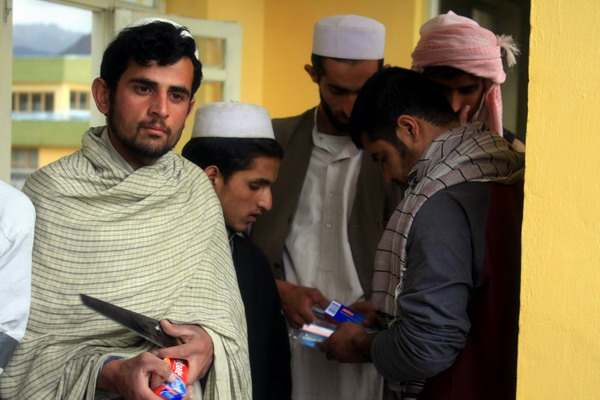
Our day-laborers were also a captive audience. So, we used their attention to teach dental hygiene. Then, as re-enforcement, offered some dental supplies as handouts.
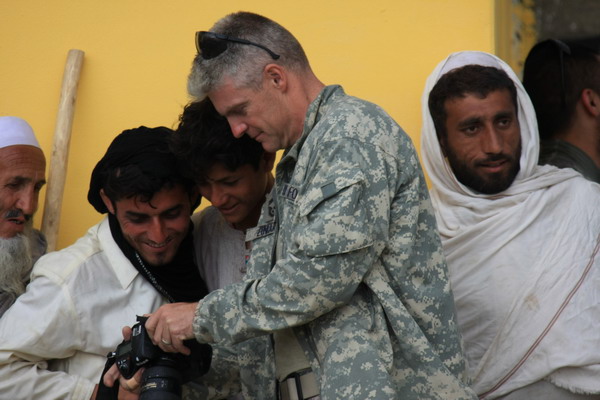
Again, the people were fascinated to see their image on the digital display.
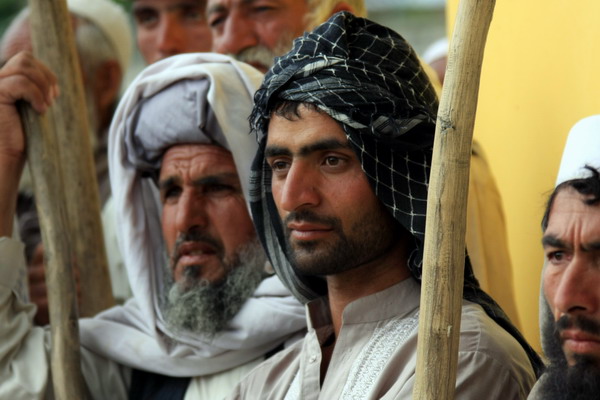
More workers with rapt attention.
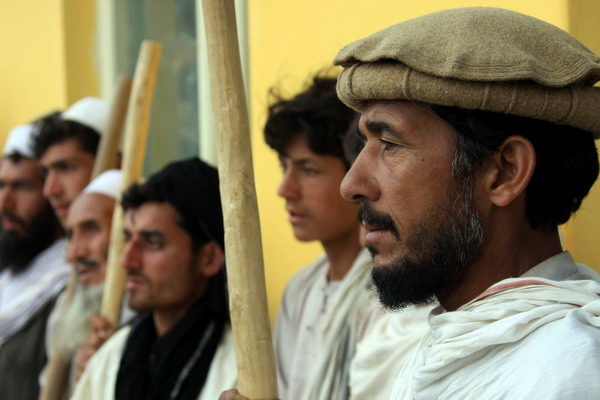
They were all very serious.
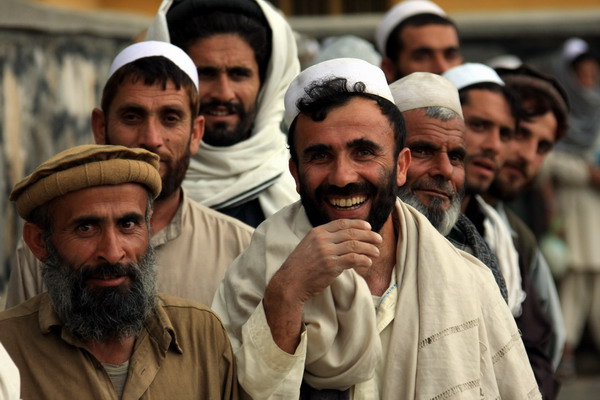
However, these guys had been watching me take pictures for a while and apparently thought I was quite amusing. So, when I came over by them, they were all smiles. Of course, it was also the end of the day and they were about to be paid. But, I’d rather think that it was me.
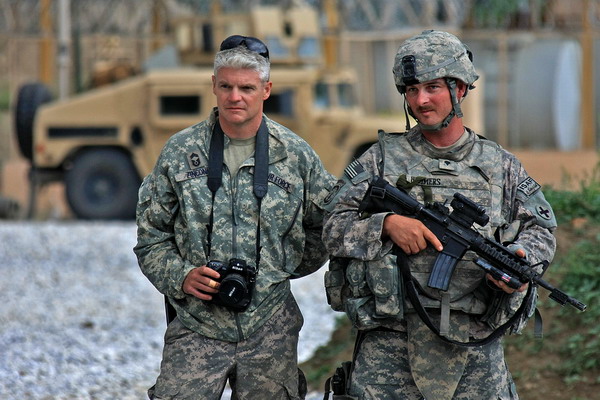
The chief looking like the rugged photographer that he is.
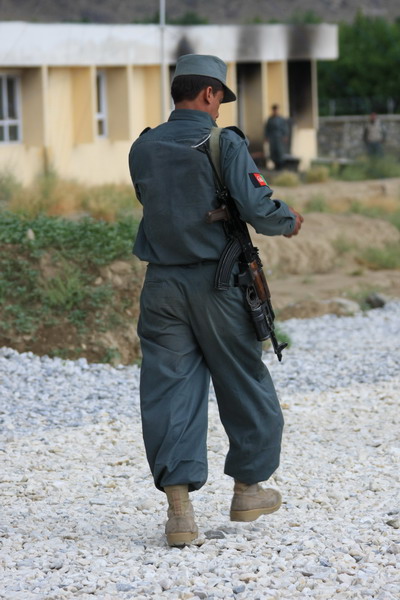
Another Afghan National Policeman.
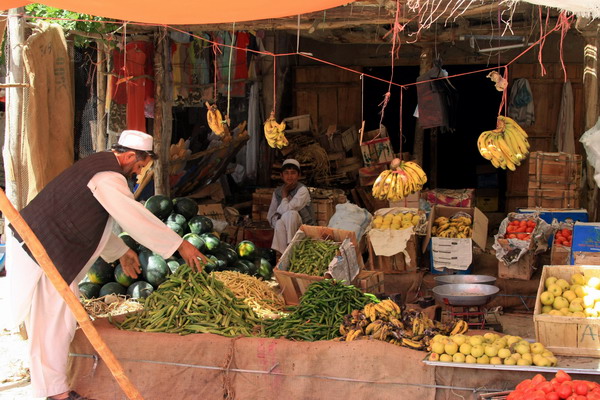
We also did a few projects out in the ~1,000 shop bazaar. So, to check on them we took a few walks out and about. This is one of the produce stores. Most normal fruit is available. The green vegetables that look like peas are actually an Afghan pepper. They are served with many dishes and are very tasty. In case you can’t tell, I really enjoy the food here.
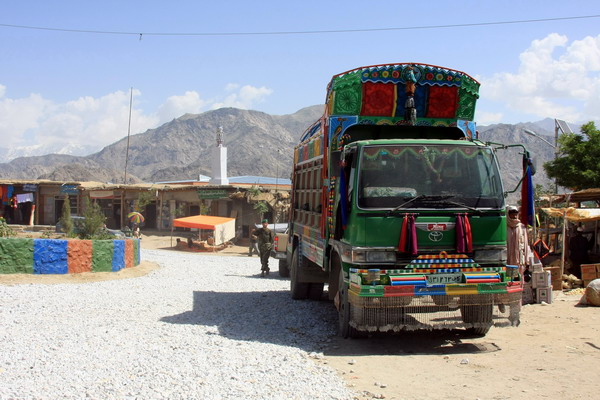
This is an example of a “jingle” truck … always colorful, sometimes noisy and ubiquitous on the roads of Afghanistan. We also re-furbished the mayor’s office (in the center of the traffic circle in the background).
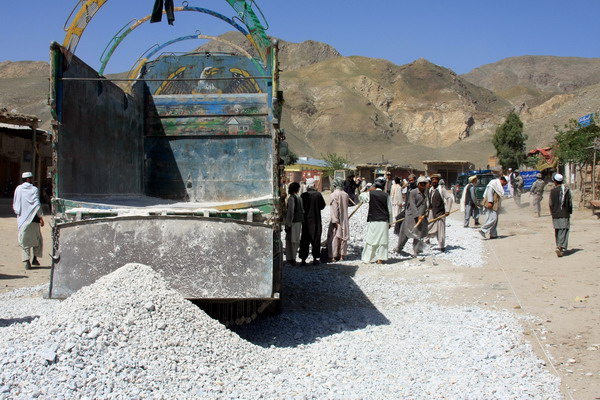
The jingle trucks also brought in the gravel to place on the dirt roads.
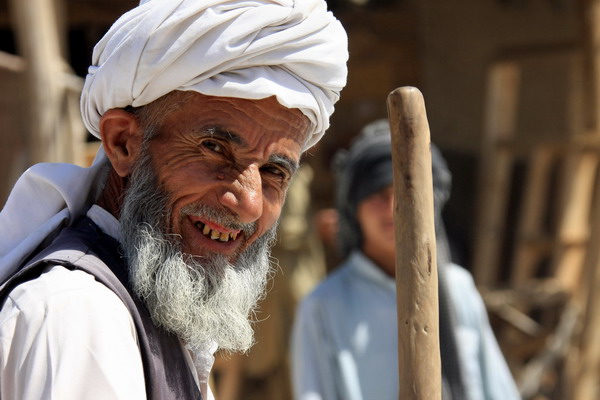
This guys was very happy to have a job with us. Although spreading gravel is easier and better with heavy equipment, it was more beneficial to the people to do it by hand, because it gave many people a job.
This boy’s shop is ingenious. He had a small generator and a number charging stations. It’s a perfect solution for a place in which most people have mobile phones, but with virtually no regular access to electricity.
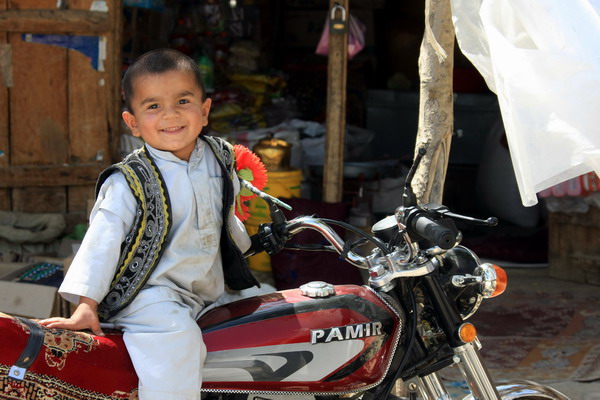
Although there aren’t many driving rules here … I don’t think this little guy hits the road regularly.
Jon had his promotion ceremony out on site. It was a fitting place to be promoted and witnessed by (nearly) the whole team. I was honored that he asked the Chief and I to pin on his new rank.
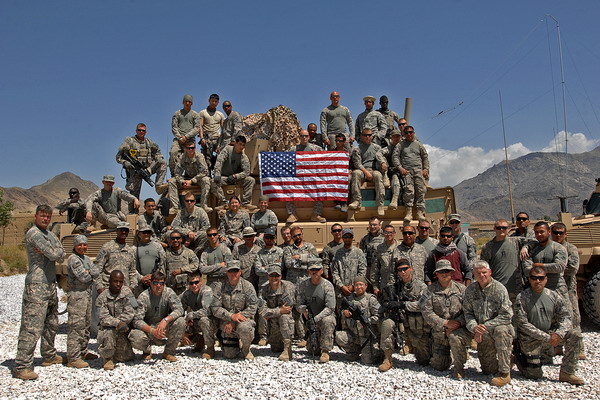
Here we all are. It was a very good mission; we connected with the local people, made our presence felt, did a few small projects, and gave me the opportunity to see a number of projects we don’t get a chance to see as often as I would like. All in all, it was a success.
So, until the next post…
–Jim
Month: June 2009
Afghanistan — April and May
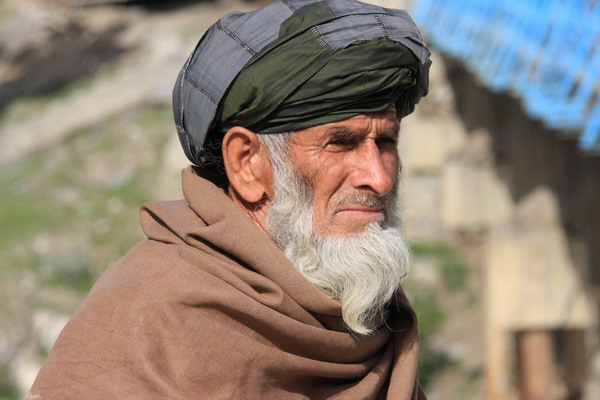
Yet another photogenic and stoic Afghan.
Just checking on the vehicles to make sure they’re still there. I hate to get stuck without them!
This is a provincial sub-governor I met with. We discussed development in his district and how that we can best meet the needs of the people.
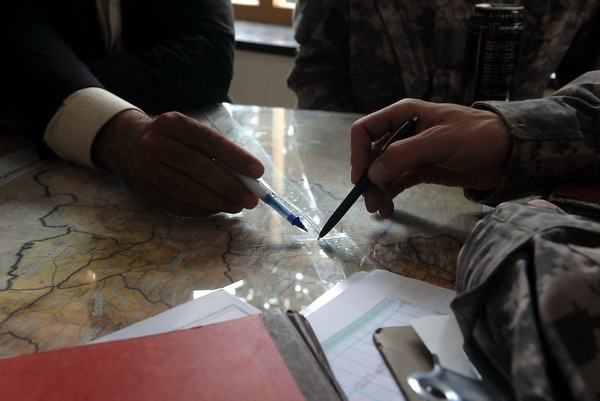
Discussion over a map.
The always beautiful lakehouse. Every time I see it, I think of Europe. Apparently, that’s what the King wanted. He built it modeled on the lakehouses of Europe.
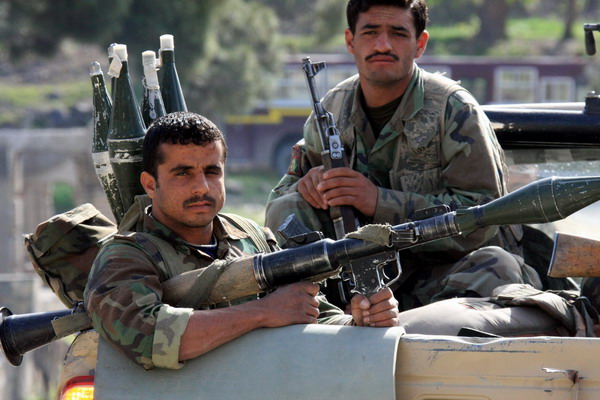
These ANA soldiers joined us on a mission and were well armed (as you can see). The ANA is a very well respected organization in Afghanistan (as it should be). So we try to enlist their help and support as much as possible.
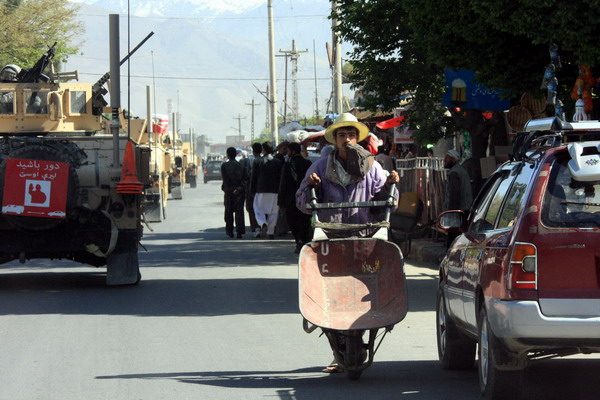
This is on a different patrol, in Parwan Province. As you can see, it’s a little more developed.
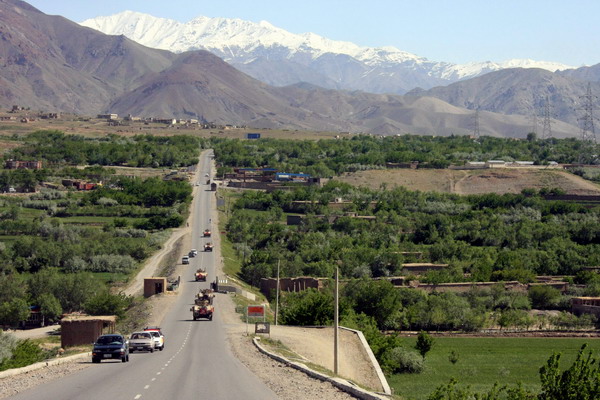
Another view of Parwan. It’s a very beautiful province, and relatively safe.
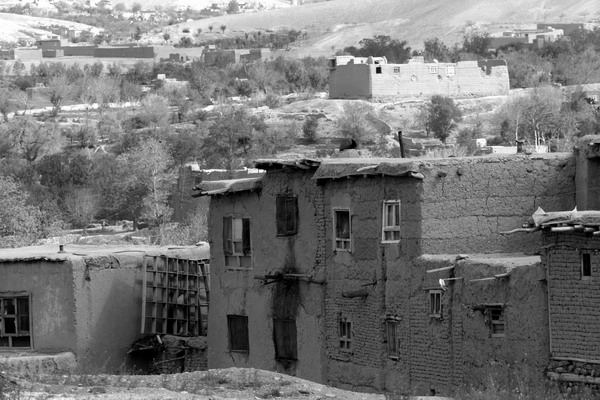
Typical houses of the region.
Some ANA and ANP who we joined for the evening.
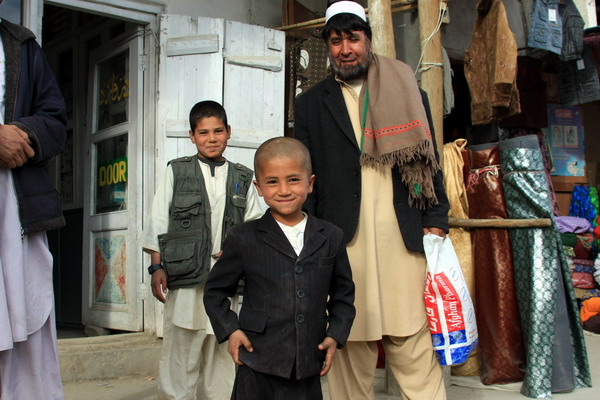
This little boy was so adorable. He was very proud of his suit. His father looked quite proud as well.
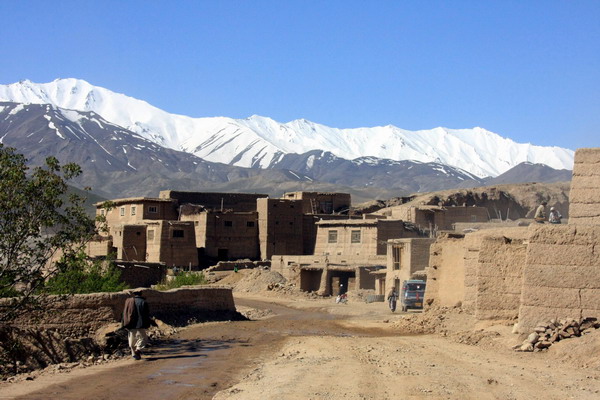
Afghanistan has so much amazing natural beauty that contrasts sharply with the rugged living conditions. It really motivates me to help give the people a chance for success in the future with our infrastructure projects.
So, I know I haven’t included many construction images. Normally, that’s because the subject matter isn’t that interesting. I kinda like the texture here, so I’m adding it. This is standard Afghan brick and mortar work. Let’s just say, it leaves much to be desired. Fortunately, the brick walls are not normally load bearing, so they don’t have to be super strong. Nonetheless, I always try to have the contractors do quality work.
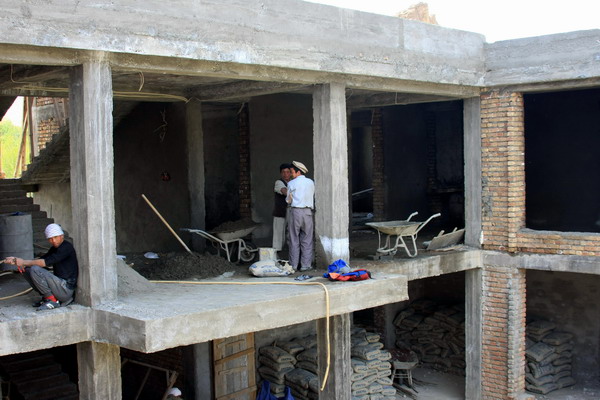
This is a partially completed District Center. This building will house the provincial sub-governor and a number of other district staff members.
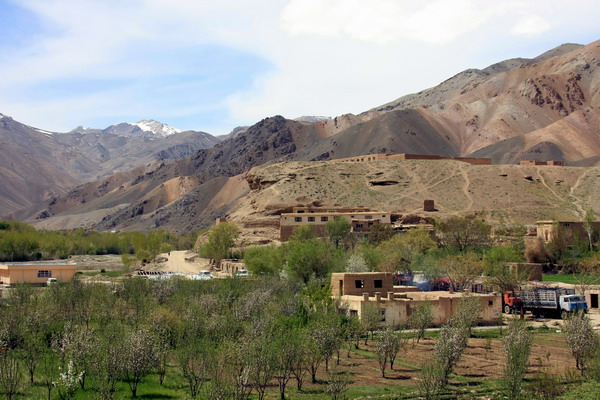
The spring is a beautiful time in Afghanistan.
One of the nice things about the Army, is that they can fly parts in anywhere you need them.
The guys.
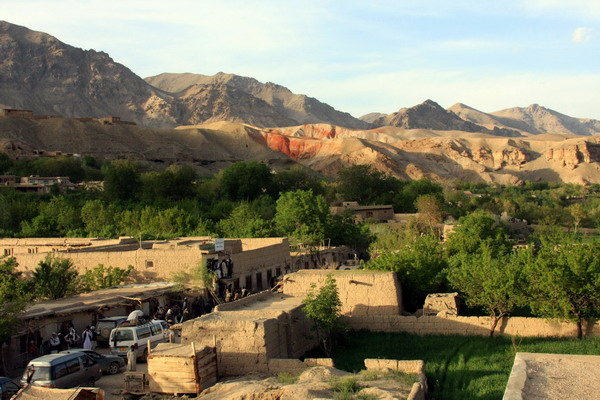
More natural beauty, and the traffic jam we caused in the village. But, when the vehicle can’t move, and the road isn’t wide enough to pass, there is no other option.
As a small token for their help, I gave these kids a few school supplies. To make it interesting though, I decided to play a trivia game (with the help of an interpreter, of course). So, I asked the kids questions on a variety of subjects. They really impressed me with their knowledge. Then, they asked me some questions to quiz me and got me on one! Who was the first person in space and what date was the flight? I got Yuri Gagarin, but missed the date (12 April 1961). Once my supplies ran out, I went out to the village and continued the game there. Eventually, I had quite a crowd gathered. It was interesting to see the sentiment of the people change from irritated that they had to wait for us to fix the vehicle to friendly because of the interaction.
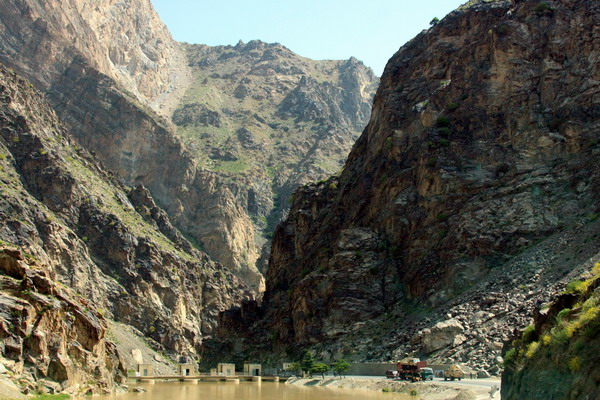
Here we are back near southern Kapisa. The mountains are quite dramatic here as well.
One of our MRAP silhouetted in the tunnel.
Here are the guys (and girl) who were with me on the mission. The team is a great group of people.
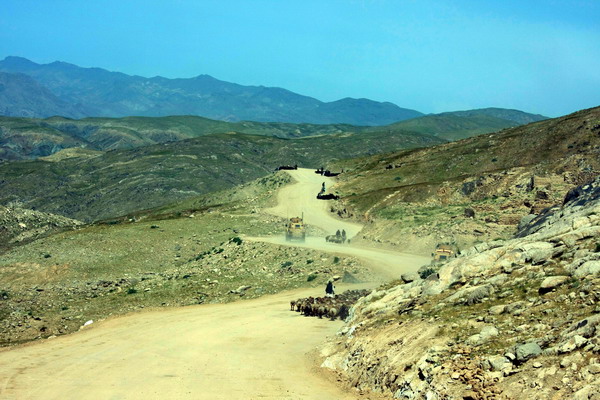
Here is one of the roads we’re building. Although it’s not quite as straight as I would like, the road is already significantly improved. I can’t wait to see what it’s like once the asphalt is finished.
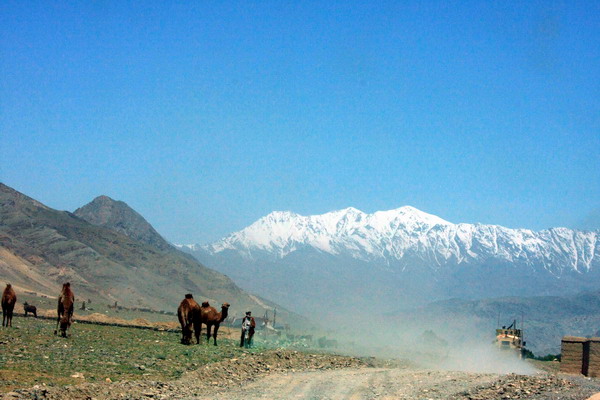
These next two images are of the Kuchi people in Kapisa. Although not a separate ethnicity, they are most often Pashtun and pastoral nomads who spend the winter in the south of Afghanistan and migrate with the season to the north.
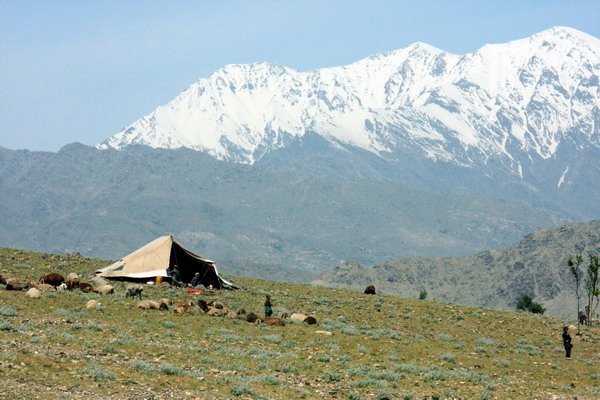
Their camps dotted the valleys in Kapisa for several weeks.
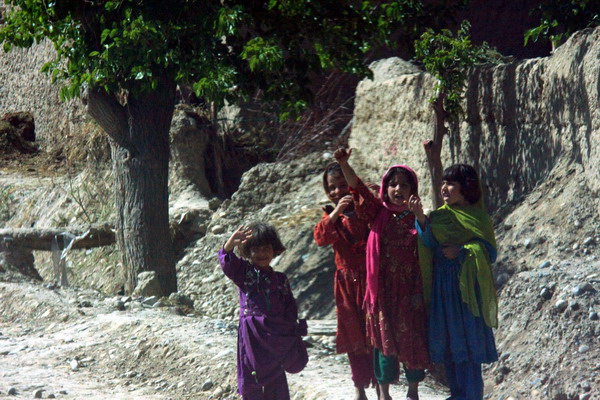
These girls are a great image to represent the mixed emotion many people feel toward us. Overall, we are seen as helpful, but without a delicate touch, we will most certainly wear out our welcome in the country. If that happens, it would be a great loss for everyone, and things would devolve rapidly. I hope that doesn’t happen, so we work very hard to build positive relations with the people and ensure the government is legitimate and connected with the people. To that end, I believe we have been successful, but there is always more we can do. I will spend the remainder of my time here working toward that goal.
So, until the next post.
–Jim
Afghanistan — March and April
Now that our adventures in South Africa have been appropriately chronicled, I will turn back to my mission in Afghanistan: the reconstruction of Kapisa and Parwan provinces. These two months were filled with many quality assurance inspections to ensure a quality product was being built, contractor meetings to gauge progress and capacity, and Afghan government meetings to plan, program and execute new projects.
The Afghan government representatives often join us when we go to the sites. For example, here the provincial line director for Rural Rehabilitation and Development joined us to inspect a compacted dirt road. This road is concurrently being paved with asphalt by another contract. Thanks to the chief for capturing this scene.
Here we are inspecting a deep well (>100 meters). Unfortunately, the quality isn’t quite what I hoped. So, the minister and I offered some suggestions to the contractor. With the chief’s fish-eye lens, you can see the whole scene.
As you can see, mobile phone technology has pervaded the market. Before 2001, there were no mobile phone carriers. Now, there are four with almost good coverage.
Answering some of the many questions from the people.
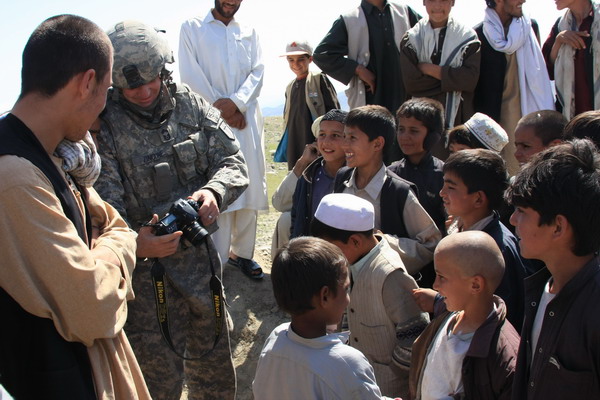
The people in this area (especially the children) loved to have their picture taken. In particular, the digital display was fascinating.
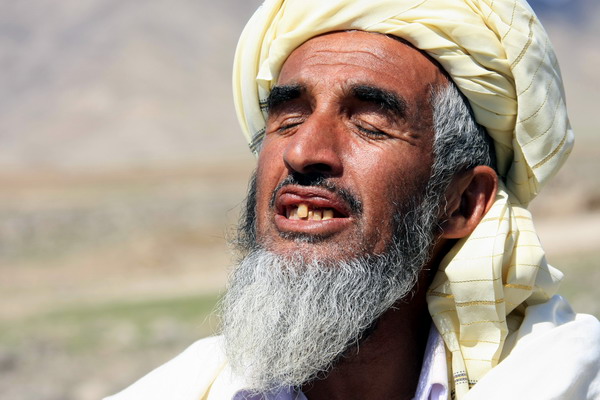
If you notice, this is the same man who was intently using his mobile phone.
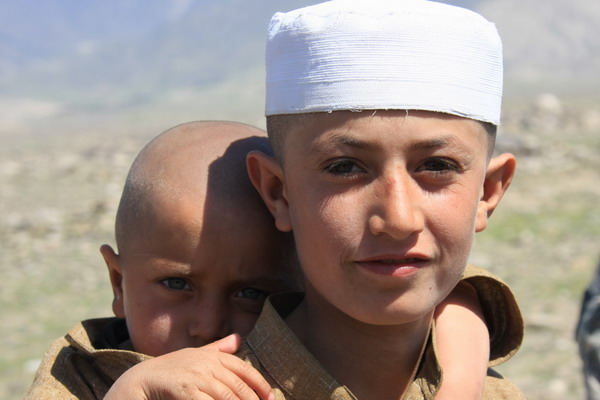
These boys were a bit apprehensive at first, but warmed up to us (at least that’s what it appeared).
Doesn’t this boy have amazing eyes? Also, many children’s heads are shaved for the Afghan New Year (Mar 21). I was told they do that to help it grow back better in the future.
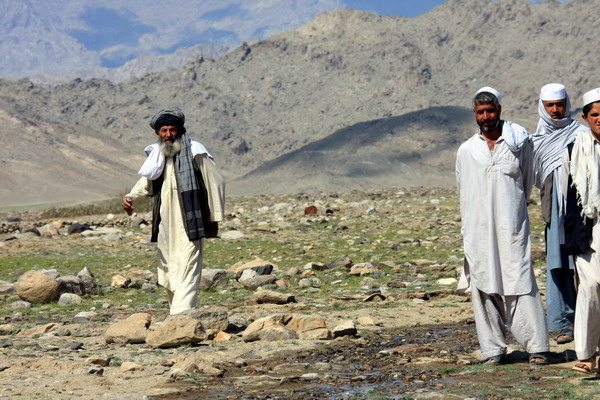
These next few images are of the people in the area.
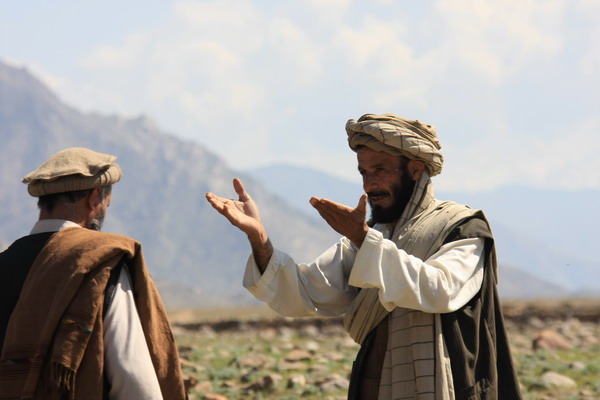
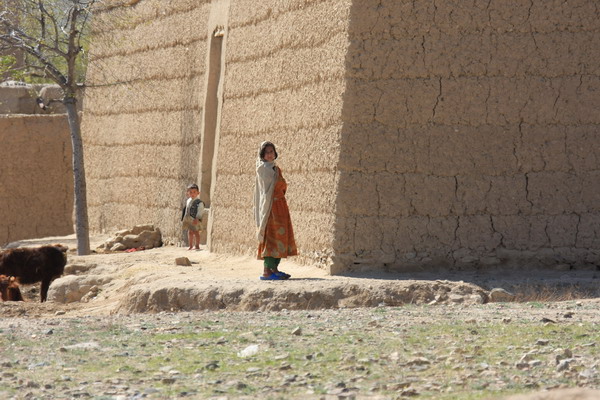
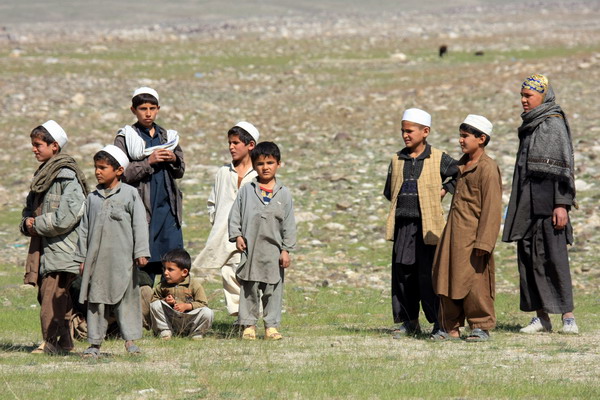
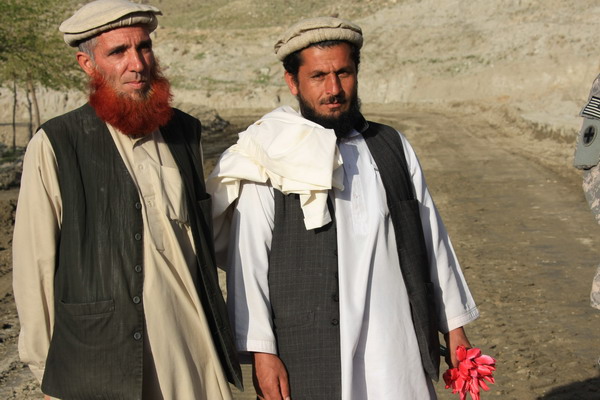
The flowers were in bloom. As a good husband, he picked a bouquet for his wife.
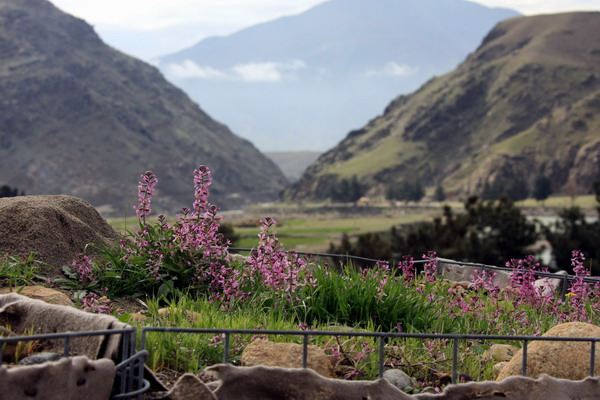
These flowers poked out in one of the HESCO barriers on the forward operating base we stayed at.
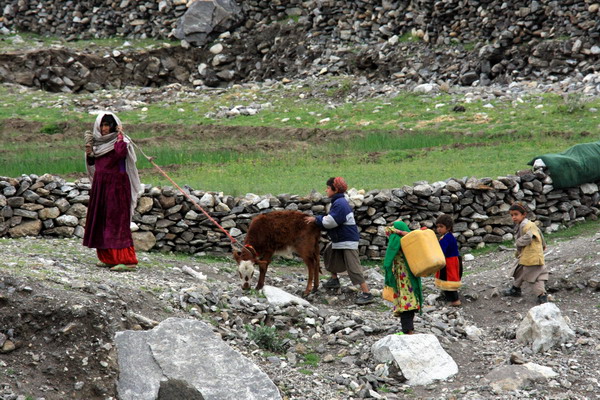
These kids were collecting water for their family from the river.
It was still a bit chilly on this trip.
The view from the inside of our vehicle.
As much as I enjoy getting out to our projects, this room is where I spend a lot of time. Here we are meeting with the government officials to help us select a contractor. Once that contractor is chosen, we meet often to discuss everything from the design to execution of the project.
Here are a couple contract proposals. We’ve worked extensively to train companies (~200) on how to submit an adequate proposal. As a result, we’ve seen a huge leap in the quality of proposals submitted for our projects.
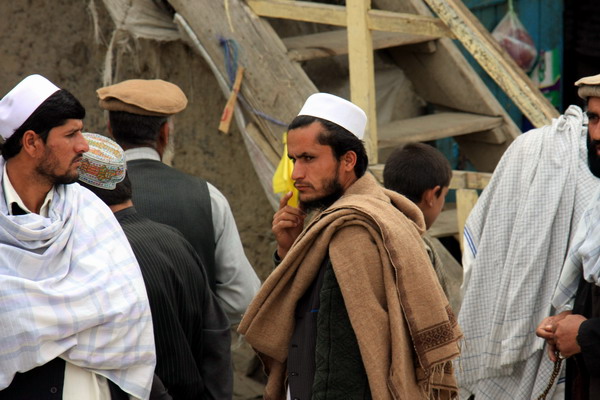
Here we are back out in another part of the province.
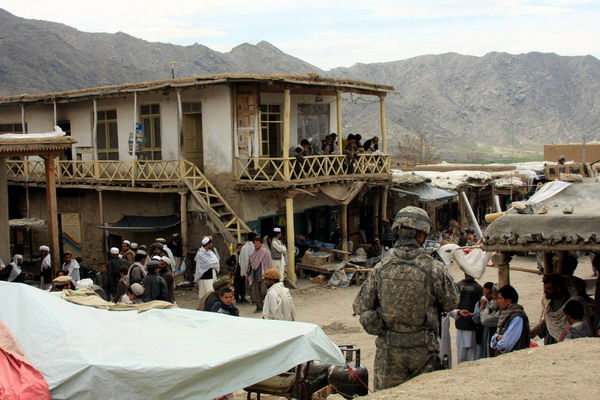
This is one of the many bazaars in the main population centers of Kapisa.
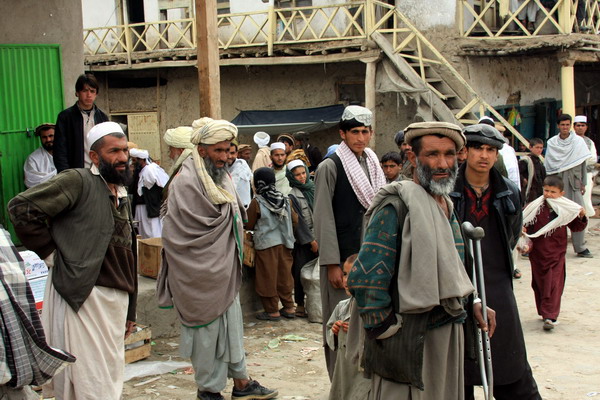
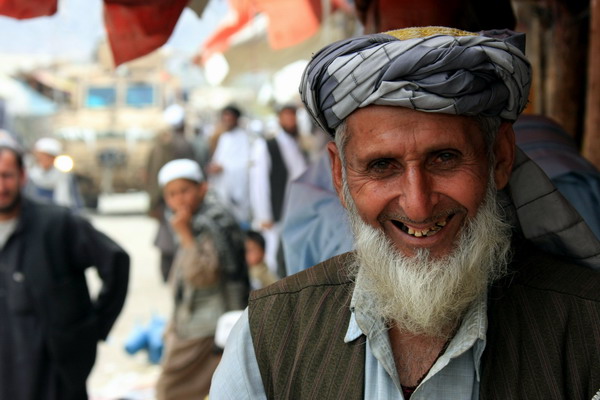
It seems I have a lot of pictures of old men. I don’t intend to, but they are often very photogenic and animated.
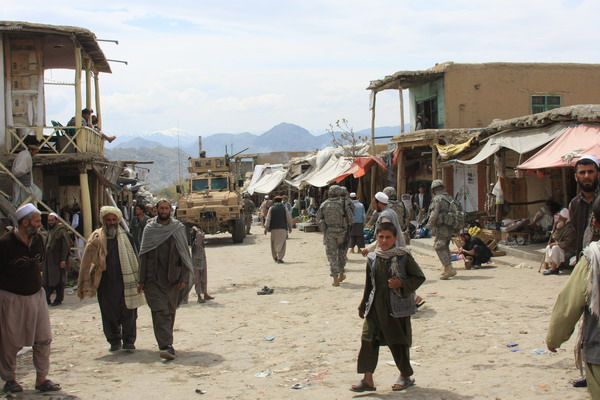
This kinda reminded me of what I expect a town in the west of the US looked like in the mid-nineteenth century. Sort of an Afghan Wild West (or east in this case).
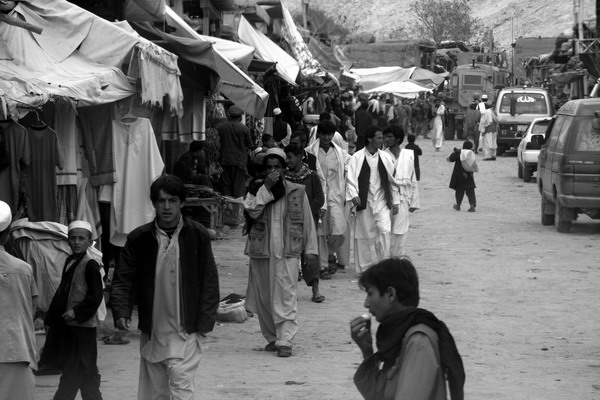
To continue with the antiquity theme.
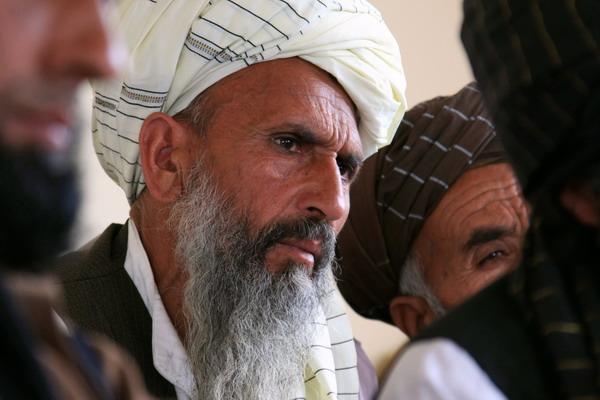
This pensive man was part of a discussion about development. The people need to help bring security. Then, we follow with development projects. The two are inextricably tied.
So, that covers my time up until mid-April. So, until the next post…
–Jim
South Africa — Cape Town (Part 2)
The final leg of our trip took us back to Cape Town. There we went up to the top of Table Mountain. The view from the top is simply spectacular.
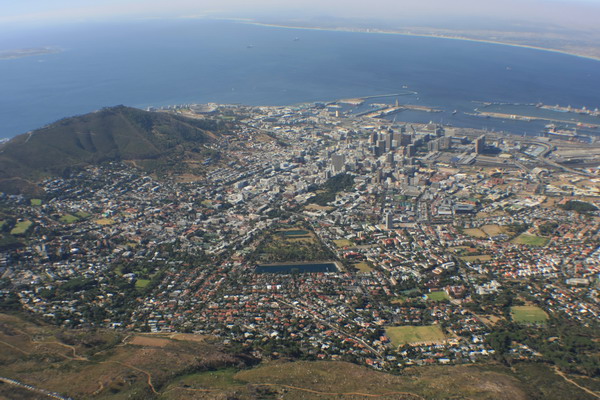
This is Cape Town’s city bowl (or downtown).
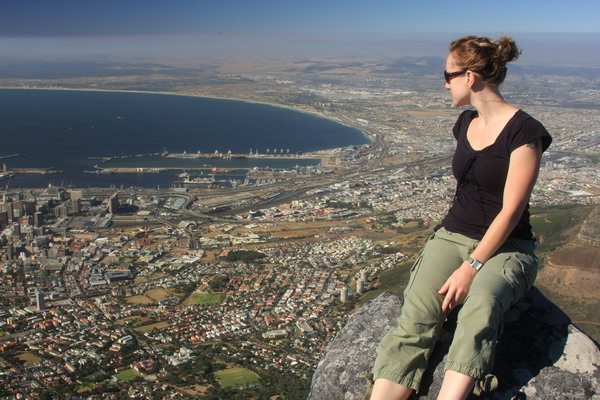
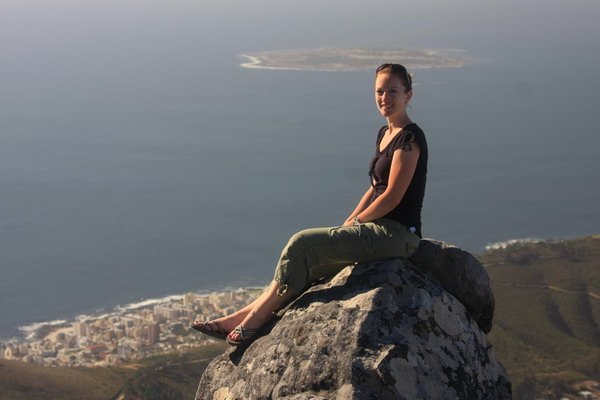
Anna’s outline connect Robben Island to the harbor. It’s seven kilometers into Table Bay and we’ll show you pictures from the island a little later in this post.
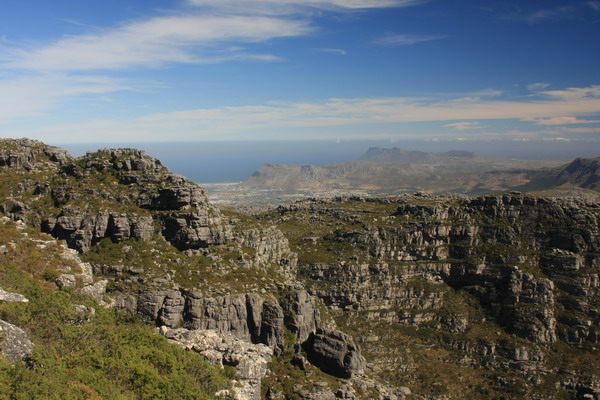
One of the beautiful vistas from the top of Table Mountain.
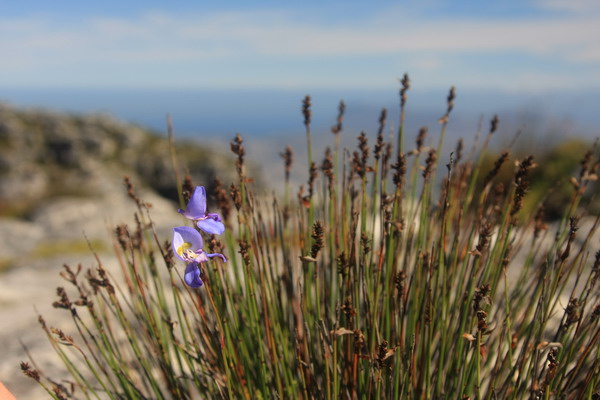
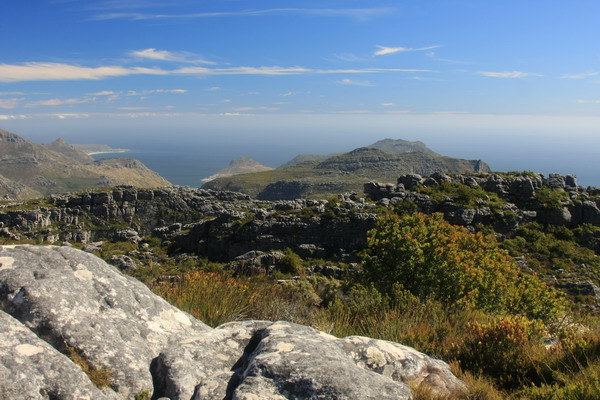
Looking out at the Cape of Good Hope.
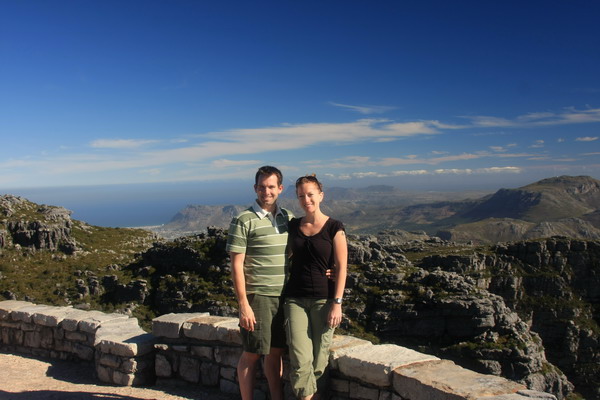
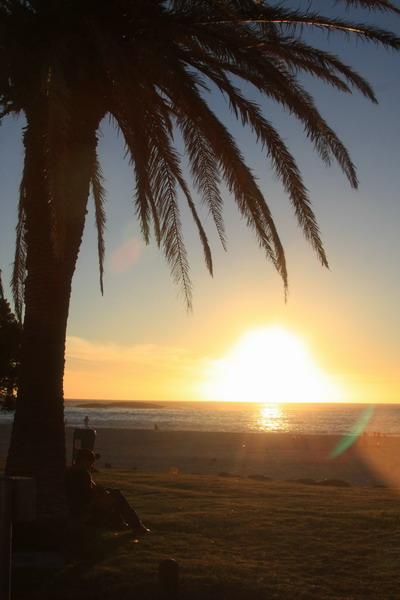
Camp’s Bay was a great place to share sundowners.
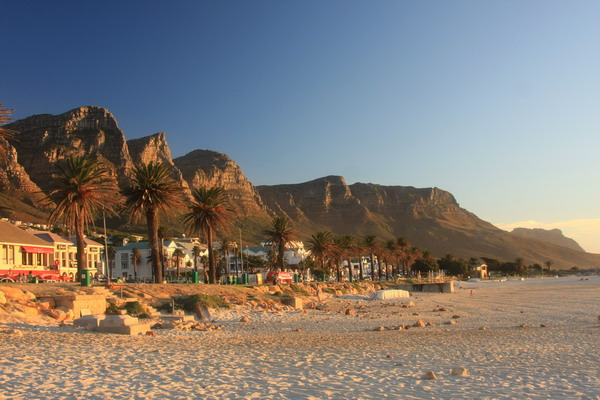
The temperature was perfect … not too hot and not too cold.
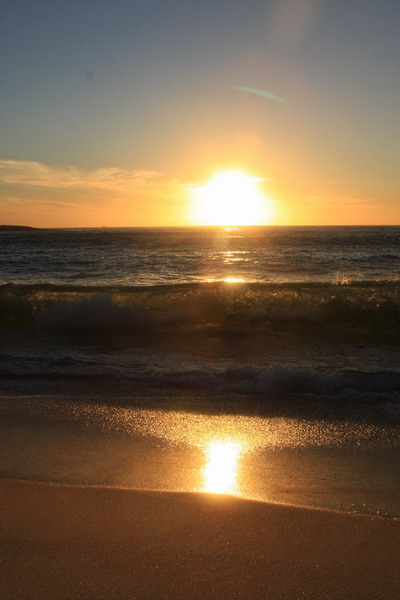
A great beach to walk along and watch the sunset.
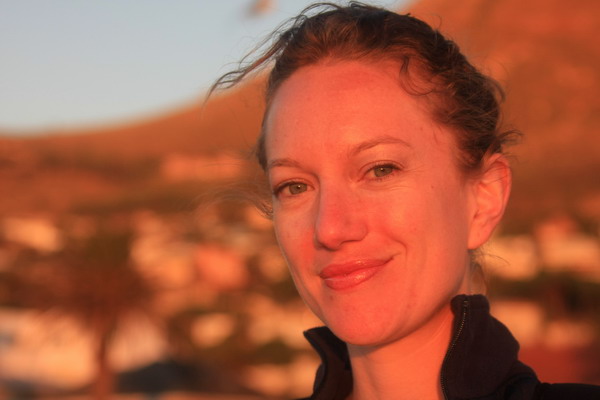
No, I didn’t retouch this image. This is the natural light. Isn’t she beautiful?
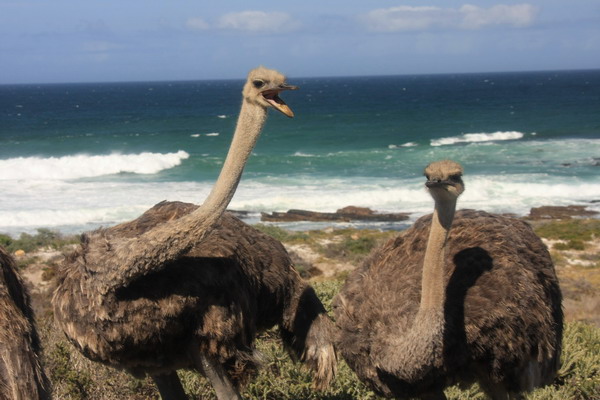
We took a mini-safari when we drove out to Cape Point National Park to see the Cape of Good Hope. These ostrich were getting a little feisty with each other.
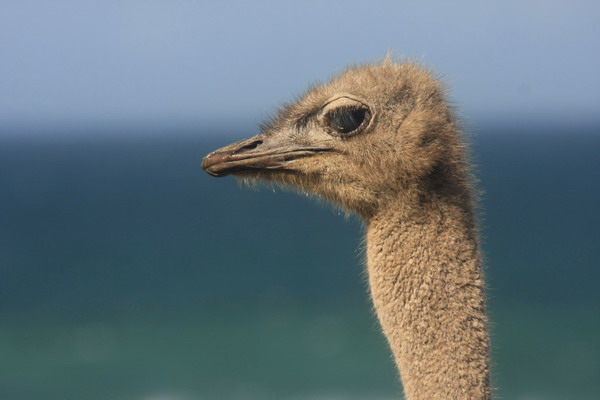
Perhaps a bit unsightly, but very tasty (my favorite meat).
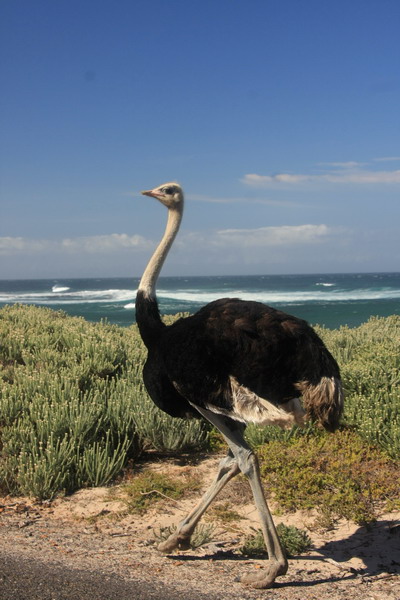
Strutting along the road.
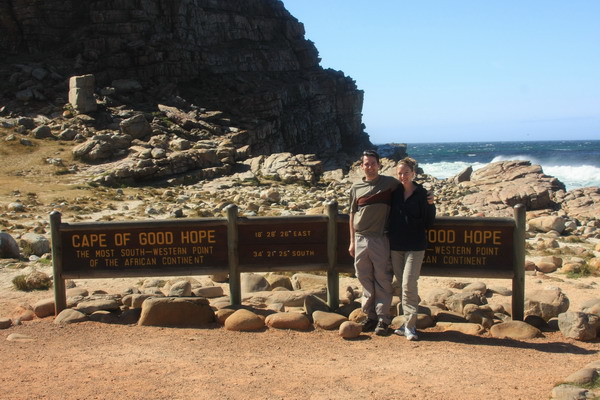
We finally reached the most South-Western in Africa (although not intuitive for most Americans [me included], there’s a place to the east that’s a little further south than the cape).
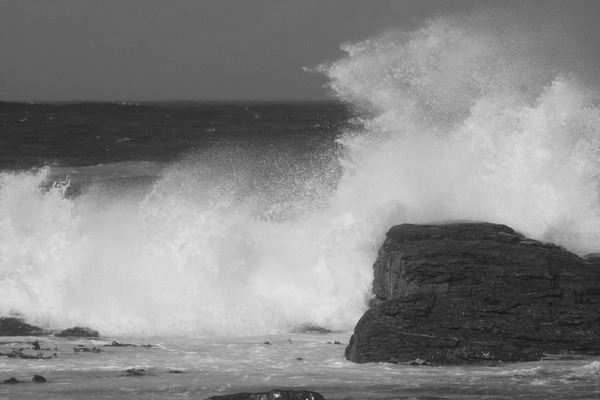
As can see from the image, the wind was quite strong, perhaps a convergence to the two air masses over the Atlantic and Indian Oceans.
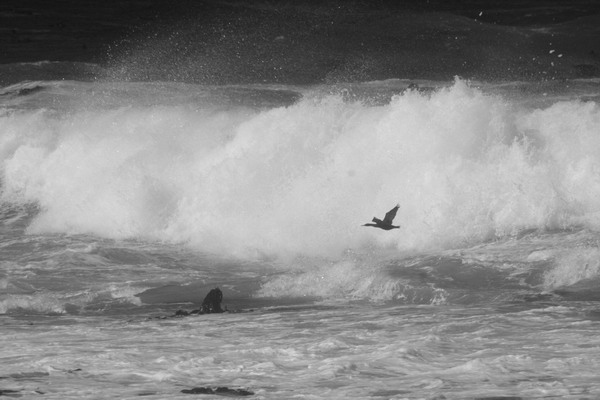
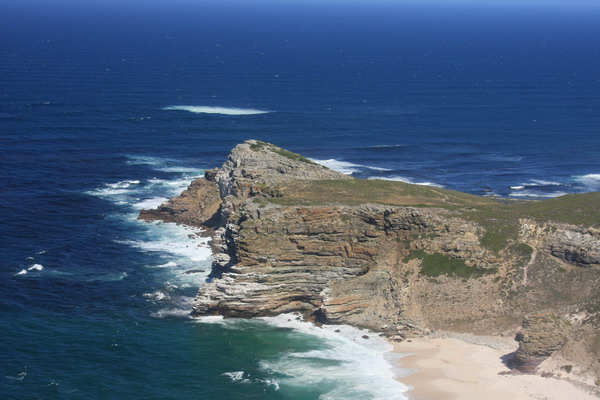
This is looking back at the Cape of Good Hope.
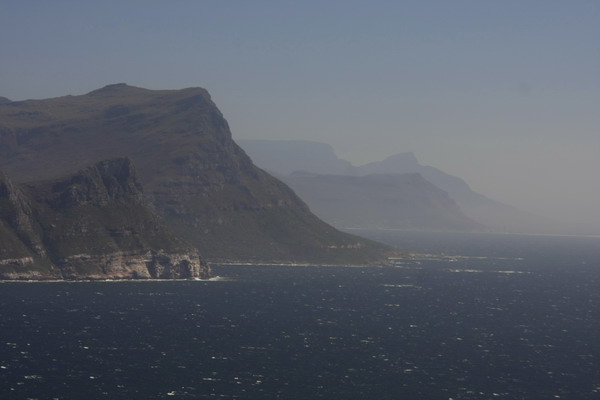
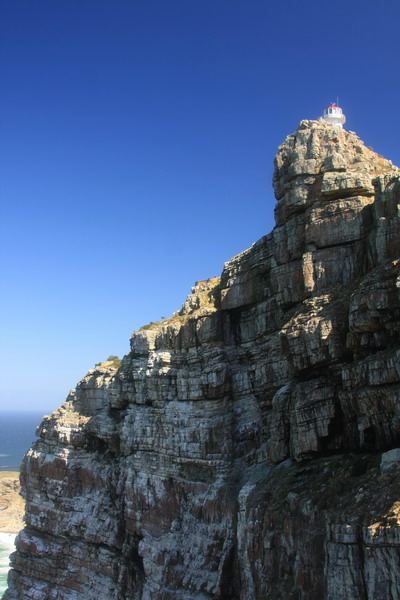
The first of two light houses on the cape.
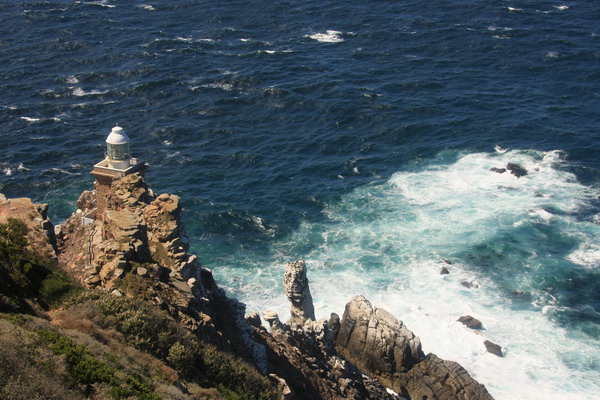
The second.
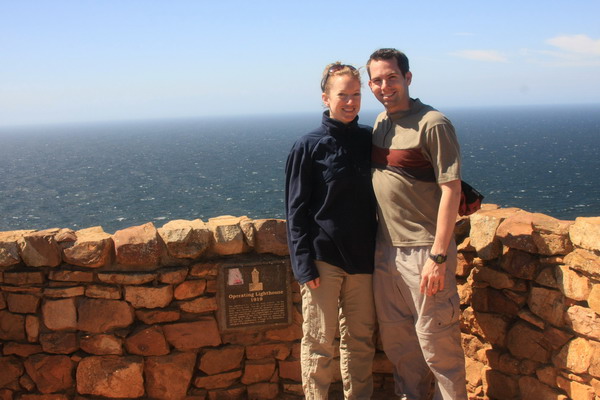
Still windy.
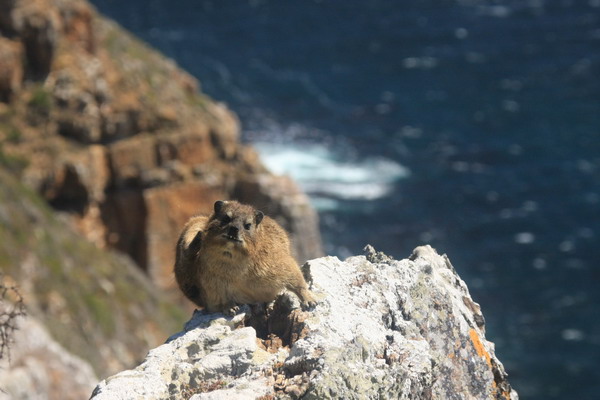
Another Rock Dassie.
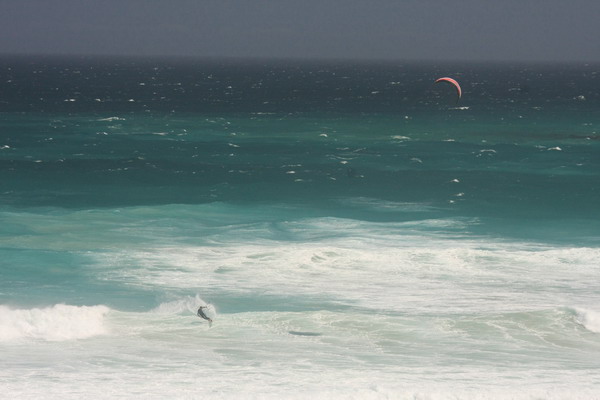
The wind was very useful for kite boarding.
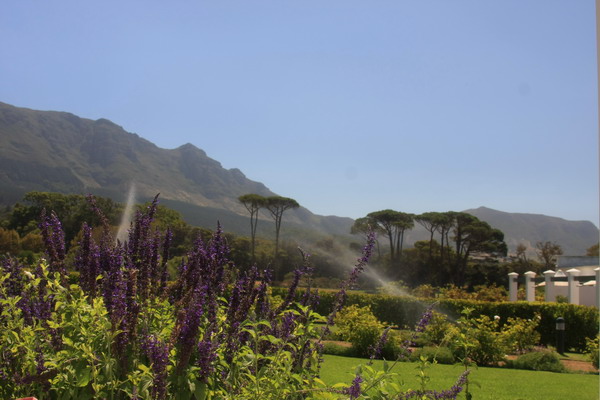
On the way back, we stopped by Constantia, the oldest wine growing region in the cape. So, of course we felt obliged to stop and sample some from a winery.
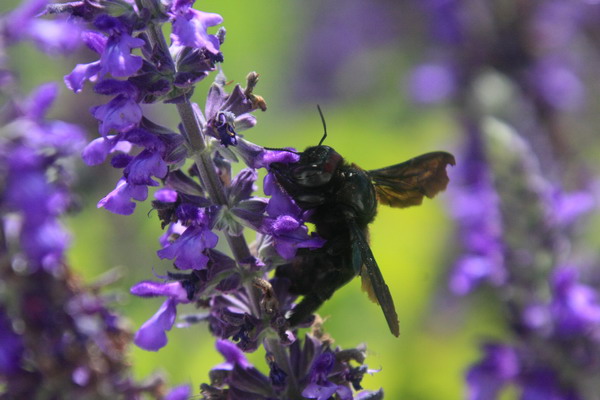
Moving pollen to help the wine develop a complex flavor.
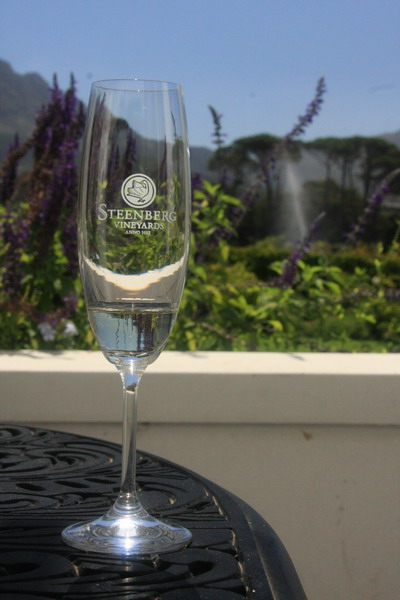
Steenberg has a classy production.
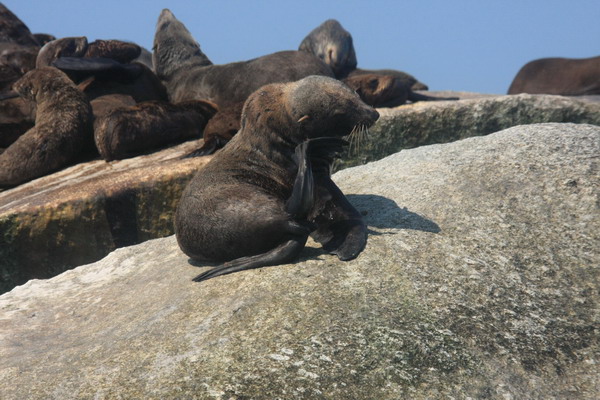
One of my favorite activities was SCUBA diving with the Cape Fur Seals (AKA Sea Lion). They were incredibly inquisitive creatures. Once we got to the colony the rough seas made for a tough entry and big surge hampered our descent. That aside, once we reached the bottom, we found a sandy patch and sat down to watch the show. The seals would come down and play with us (inches from my mask). I’m not sure who enjoyed it more, them or us. They loved the human interaction and bubbles, and we loved the nimble, aquatic showmanship. It was a great time underwater. However, the people
who stayed on the surface snorkeling, didn’t have as much fun. The seals would play with them, but the rough seas made almost everyone sick. Another good reason to SCUBA! 🙂
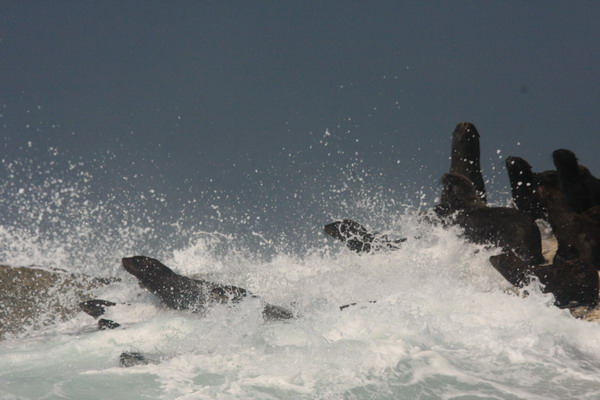
The seals didn’t seem to mind rough seas though…
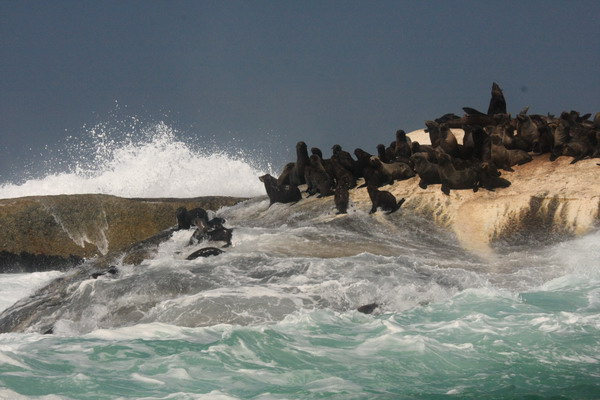
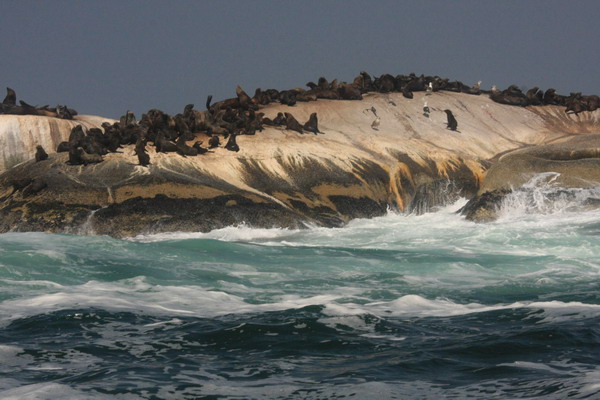
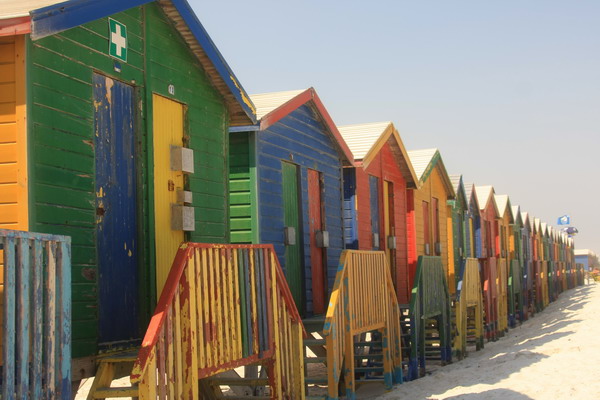
On the way back, we decided to stop at the colorful beach houses on Muizenberg Beach.
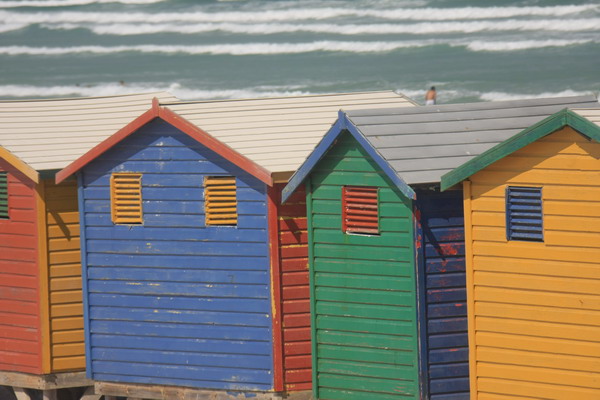
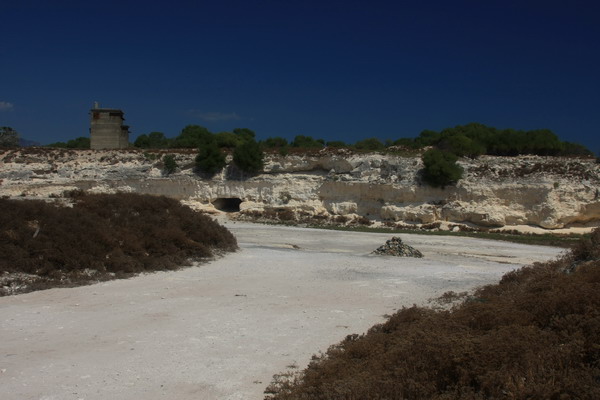
One of our final activities in Cape Town was a trip out to Robben Island. This is the former island prison (kinda like Alcatraz) where they held political prisons, including people like Nelson Mandela for 17 years. This quarry is where the prisoners made big rocks into little rocks.
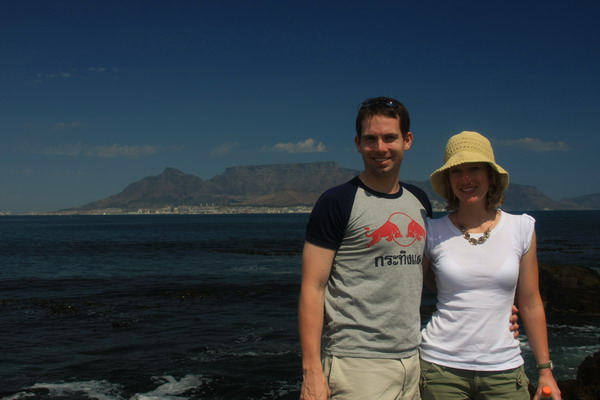
Here you can see Table Mountain and the City Bowl in the background.
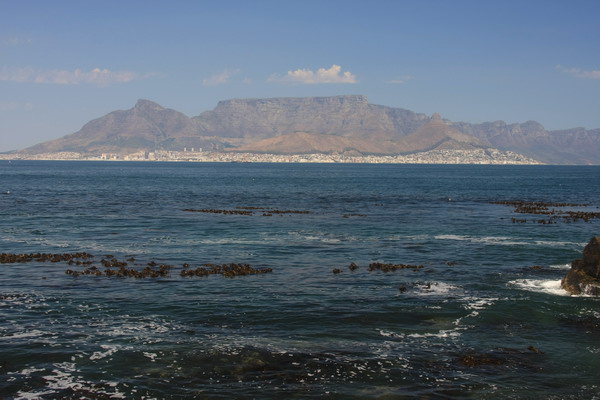
Another view of the same.
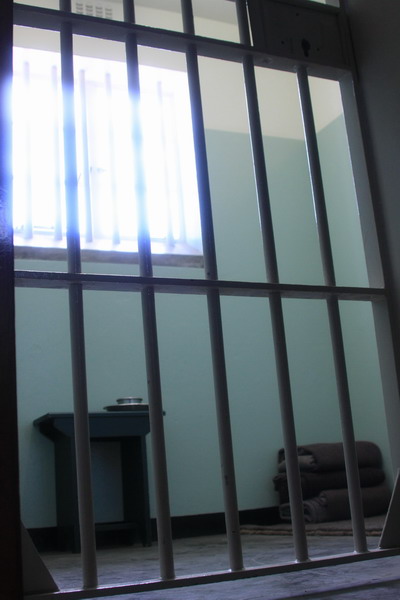
This is the austere prison cell where Mandela spent several years.
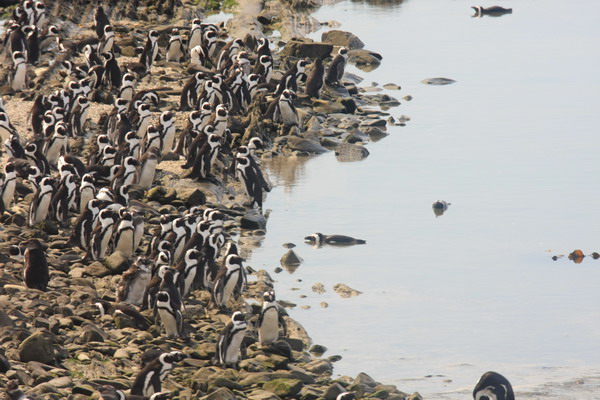
Robben Island also has a large colony of African penguins.
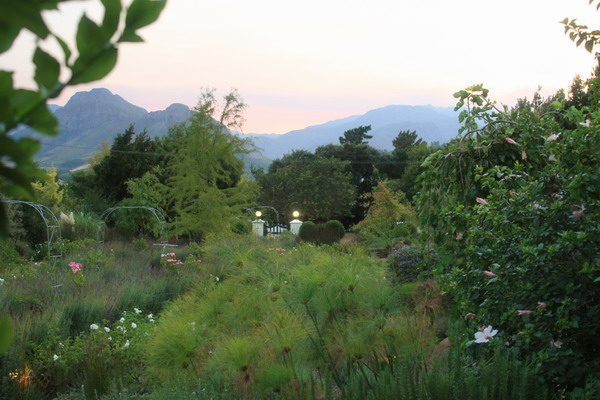
Our final two days were spent back in the wine country. In particular, we stayed at an adorable bed and breakfast in Franschhoek, a village started by French Huguenots several centuries ago. It was a great way to slow down a little, enjoy great food and drink, and just spend time together.
That also wraps up our time in South Africa. It was a great experience, but parting ways again with the knowledge that it would be 5 more months until we saw each other was very difficult. But, today, we have less than 2 months remaining. I continue to let work consume me and Anna tries to enjoy herself in Europe. She’s been able to participate in the official University of Maryland commencement ceremony (even though she officially graduated last year) with my mother. Or, right now, she’s home with her family taking part in the planning festivities for Emma’s wedding in August (her sister).
I’m not sure if the next post will be on Afghanistan again (I have many stories and images to share), or one detailing Anna’s adventures, but we’ll try to post something soon.
Until then…
–Jim
